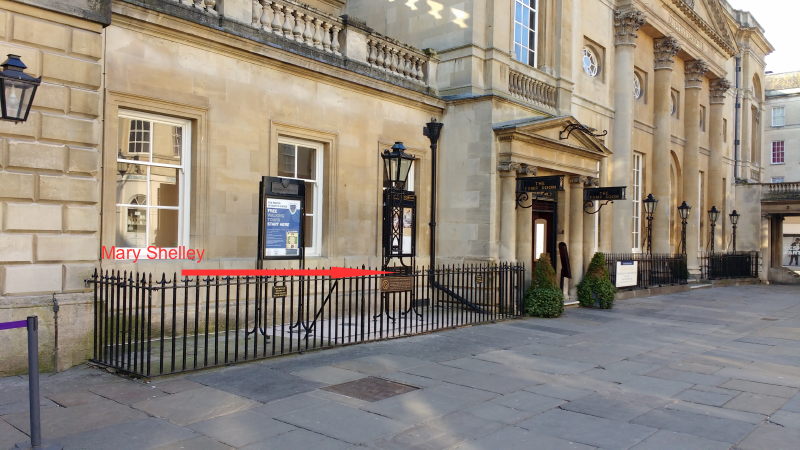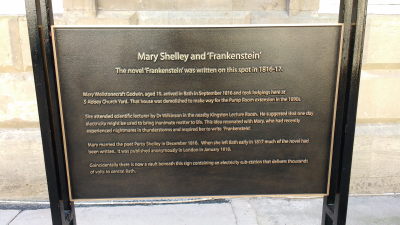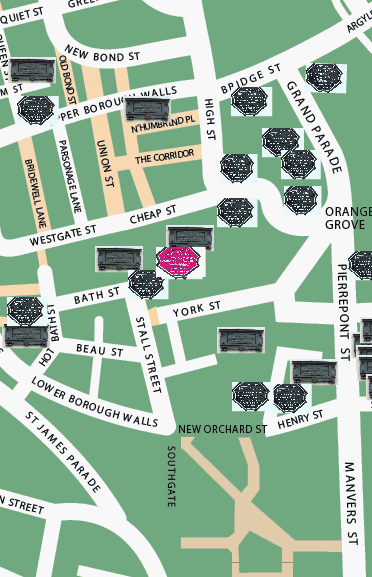Mary Shelley
Who was she?
Wikipedia:
Mary Wollstonecraft Shelley (née Godwin; 30 August 1797 – 1
February 1851) was an English novelist, short story writer,
dramatist, essayist, biographer, and travel writer, best known for
her Gothic novel
Frankenstein: or,
The Modern
Prometheus (1818).
Why was she in Bath?
Mary Wollstonecraft Godwin, aged 19, arrived in Bath in September
1816 and took lodgings at 5 Abbey Church Yard. She attended
scientific lectures by Dr Wilkinson in the nearby Kingston Lecture
Room. He suggested that one day electricity might be used to bring
inanimate matter to life. This idea resonated with Mary, who had
recently experienced nightmares in thunderstorms and inspired her
to write ‘Frankenstein’.
Mary married the poet Percy Shelley in December 1816. When she
left Bath early in 1817 much of the novel had been written. It was
published anonymously in London in January 1818.
The plaque was
unveiled
on 27th February 2018 by Professor Sir Christopher Frayling
and Councillor Cherry Beath, the Chair of Bath & North-East
Somerset Council.


The text reads
"Mary Shelley and ‘Frankenstein’
The novel ‘Frankenstein’ was written on this spot in 1816-17.
Mary Wollstonecraft Godwin, aged 19, arrived in Bath in
September 1816 and took lodgings here at 5 Abbey Church Yard.
That house was demolished to make way for the Pump Room
extension in the 1890s.
She attended scientific lectures by Dr Wilkinson in the nearby
Kingston Lecture Room. He suggested that one day electricity
might be used to bring inanimate matter to life. This idea
resonated with Mary, who had recently experienced nightmares in
thunderstorms and inspired her to write ‘Frankenstein’.
Mary married the poet Percy Shelley in December 1816. When she
left Bath early in 1817 much of the novel had been written. It
was published anonymously in London in January 1818.
Coincidentally there is now a vault beneath this sign
containing an electricity sub-station that delivers thousands of
volts to central Bath."
Location map of plaque:

(c) 2018
Bath-Heritage.co.uk | Contact us|




